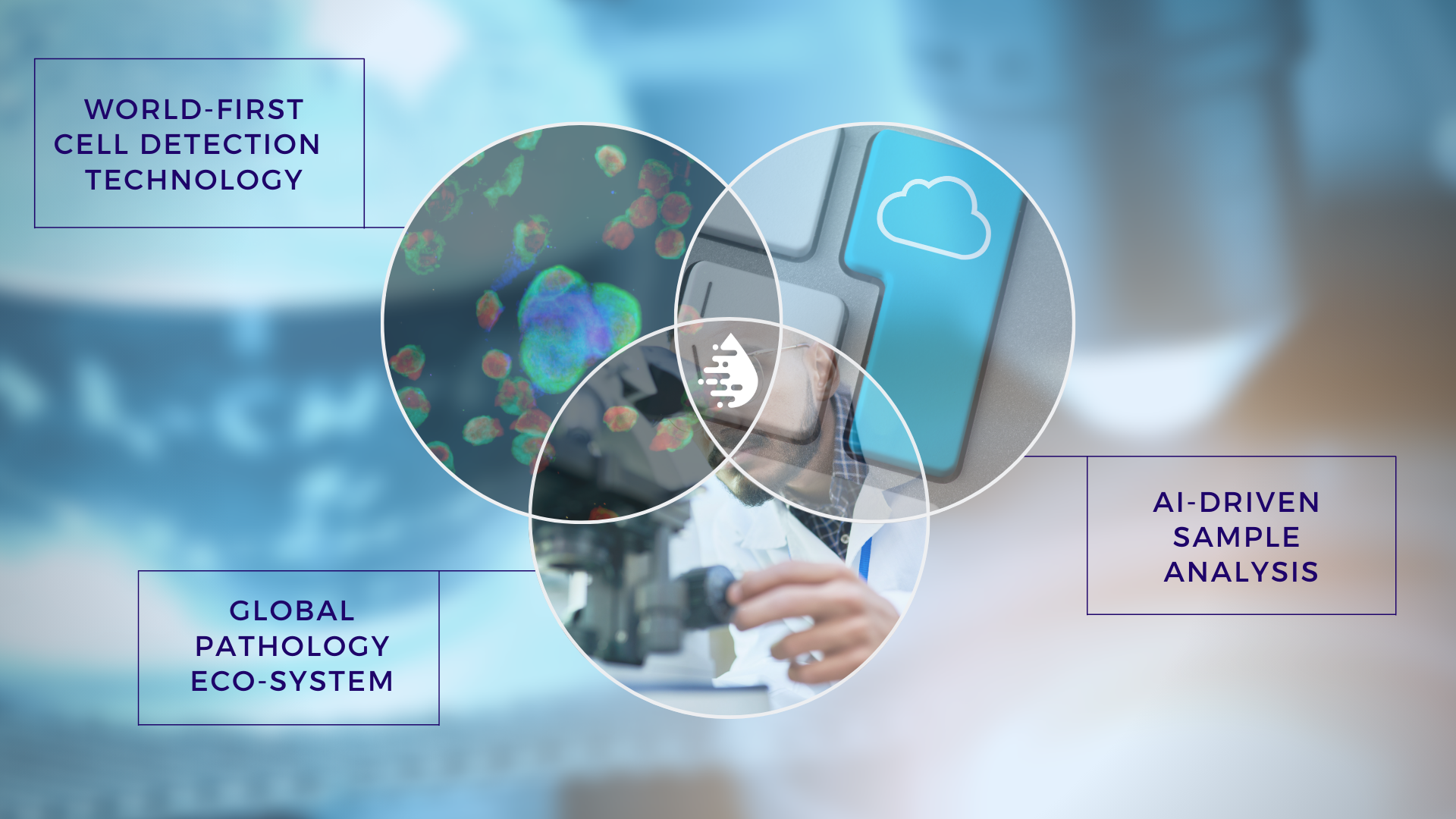Episode 13
Navigating medical start-up vocabulary“X-ZELL fuses next-generation rare cell detection technology with Artificial Intelligence to catapult pathology into the digital age.
The result is an accurate, affordable and scientifically proven method of screening small, 10mL blood samples for traces of early-stage cancer that can be deployed in any standard pathology lab around the globe – right now.”
Nailing that all-so important elevator pitch in less than 50 words (or about 30 seconds of speaking time) is not an easy task – especially for a company as multifaceted as X-ZELL.
As the only fully integrated rare cell detection specialist in the game, X-ZELL is covering the entire diagnostic value chain from cell separation through to AI-guided image analysis – including hard- and software development, clinical trial management and even reagent production.
The advantage is obvious. X-ZELL is the only liquid biopsy company in the world capable of detecting biomarkers that are otherwise classified as “undetectable” in clinical routine – in turn revolutionising the way we think about population-based disease screening.
In doing so, X-ZELL is also demonstrating that innovation and scientific relevance don’t have to come at the expense of rapid global scalability.
Communicating complexity
The downside, however, is that pitching on behalf of an organisation like X-ZELL requires careful preparation and foregoes simple comparison.
X-ZELL does not strive to be “the Uber of healthcare,” for example. What X-ZELL has set out to do simply hasn’t been done before, and downplaying that complexity would ultimately be a disservice to investors and patients alike.
In line with that, we also try to avoid focusing on buzzwords such as disruption when we pitch.
From an outcome perspective, X-ZELL may be disrupting the fundamentals of pathology, but from a process point of view, it is acting inclusively – by acknowledging existing best practice and involving key stakeholders in our R&D processes from day one.
To us, that’s what healthcare innovation has to be all about – challenging, sometimes outright disruptive, but in an inclusive, collaborative fashion.
Inspired by Stanford University’s Dr Paul Yock, we call it need-driven innovation. Rather than leaping to invent a technology and then searching for a challenge it can be used to address, we start by thoroughly examining the market, existing solutions, and the needs and perspectives of all the stakeholders involved – trying to avoid any preconceived ideas about what a solution should look like.
As Dr Yock put it in a piece for Fast Company, “this process typically involves research into the medical literature; interviews with doctors, patients, and other stakeholders; and in-person observations to see how the problem plays out in different healthcare settings.”
Navigating industry lingo
If that isn’t complex enough already, there’s a second dimension to negotiate when pitching in a healthcare context – industry vocabulary.
Is X-ZELL more of a med tech or a biotech business, for example, or maybe even a health tech one? Or is it, in essence, a deep tech organisation? And what about life sciences?
You may argue that the very definition of innovation is to redefine existing paradigms and forge a path through uncharted territory, but that doesn’t keep investors, analysts and marketers from trying to compartmentalize the industry in a move to make it more comparable.
Even though there is no single, globally accepted definition of the above, a consensus has emerged that med tech businesses focus on the development of medical devices and procedures – focusing largely on the traditional healthcare market – while the health tech community is covering the booming digital health and wearables market, with more direct access to the patient.
Biotech businesses, meanwhile, tend to compete closely with traditional pharma in the field of drug development, while the term deep tech is often used to summarise solutions that require substantial R&D and hardware development, regardless of the field of application.
With that in mind, you may argue that X-ZELL is an organisation that has developed a world-unique deep tech solution – our modular platform technologies, including the revolutionary Cryoimmunostaining™ Suite – to achieve a med tech objective – early cancer diagnostics.
To do so, we use elements that may fall into the health tech bracket – specifically Artificial Intelligence and Big Data analytics – as well as the biotech space – think biomarker detection and reagent development.
What may sound confusing is actually in line with the more broad-based definition the World Health Organisation (WHO) has developed. “A health technology is the application of organized knowledge and skills in the form of devices, medicines, vaccines, procedures and systems developed to solve a health problem and improve quality of lives.”

Real-life consequences
Why is it worth talking about? Because a lack of clarity can slow down both innovation and fundraising, as Justin Barad, co-founder and CEO of Osso VR, recently explained in a piece for TechCrunch. He argues that different jargon can have a direct impact on risk assessment and funding, with health tech commonly considered more risky than biotech, for example.
With that ‘meta dimension’ in mind, formulating the perfect elevator pitch has gotten even more difficult than before.
At X-ZELL, we have embraced that complexity by structuring our pitch like a linguistic Venn diagram, if you will – merging next-generation rare cell detection technology with Artificial Intelligence and existing pathology infrastructure to tackle one of the biggest medical challenges of our time.
While there may be specific characteristics to each area, there is also significant overlap in the middle. More often than not, it’s here where you find true innovation.
In the end, that’s what patients need the most – and that’s what we want to get across the most when pitching on the fly.
© 2024 X-ZELL Biotech Pte. Ltd.
Find Us